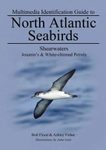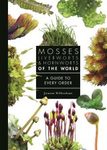"A fascinating, important, and timely book about a major icon of extinction."
– Mark V. Barrow Jr., Science
"An engaging book."
– Tom Tierney, New Scientist
"What makes The Last of Its Kind special is that it was written by an Icelander, and Icelanders were the last people to live with, and hunt, great auks. Pálsson's deep knowledge of the Icelandic language and culture allows us to see afresh the last eyewitness accounts of this extinct bird, as well as the consequences of its extinction."
– Tim Flannery, The New York Review of Books
"The Last of its Kind is a slow-moving thriller, a murder-mystery where we know from the outset who did it."
– Surekha Davies, Times Literary Supplement
"[A] moving and well thought out tale [...] This book is an important part of an innocent species' life."
– Deb Hirt, Muskogee Phoenix
"[An] engaging story."
– Andrew Robinson, Nature
"Through a combination of scientific analysis, personal narratives, and ecological insights, Pálsson crafts a gripping story that underscores the urgent need for conservation efforts to protect endangered species."
– John Hague, The Grebe
"[A] thoughtful and melancholy account."
– Liam Shaw, London Review of Books
"Remarkable."
– Rob Hume, BirdGuides
"Wonderful."
– John Miles, Birdwatching
"Much has been written about the demise of the Great Auk [...] and this work by Gísli Pálsson is an important addition to the body of work on this iconic and enigmatic species. It is scholarly and well-presented."
– David Gascoigne, Travels with Birds
"Pálsson affectionately profiles Wolley and Newton and thereby gives readers a colorful view of what ornithology and natural history was like in the decades immediately before the publication of Charles Darwin's On the Origin of Species."
– Steve Donoghue, Open Letters Review
"An atmospheric blend of history, travelogue and science."
– Anjana Ahuja, The Guardian
"Pálsson includes thoughtful discussions of evolutionary theory and speciation."
– J. Burger, Choice
"Beautifully written [...] Pálsson brings an intimate and authentic touch to this tragic exploration of one bird's extinction. In his very characteristic narrative voice that weaves facts, history and science with his own personal knowledge of the land and its bio-cultural geography, this book is somewhat of a mystery thriller that knocks on the Icelandic door of memory, melancholia, remorse and reparation [...] He should be applauded for this raw, yet at times elegiac handling of the story of the last Great Auk."
– Shé Mackenzie Hawke, Visions for Sustainability
"The Last of its Kind is a must-read for any seabird enthusiast, for those interested in extinction and the history of conservation science, and for anyone who wishes that Great Auks still roamed our oceans."
– Alex Bond, Ibis
"The great innovation and the great value of this book (wonderfully translated from the Icelandic by Anna Yates) is not the new historical details it adduces, though, but rather in its exploitation of a 'new old' source for those details, the unpublished report compiled 175 years ago by John Wolley and held now in the manuscript collection of Cambridge University."
– Rick Wright, ABA
"Pálsson's book is a fascinating addition to the growing literature on this extinct species."
– Bernard Zonfrillo, Archives of Natural History
"The Last of Its Kind recounts the final chapter of the great auk's tragic story. Gísli Pálsson's meditation on the meaning of extinction is thoughtful, clarifying, and deeply moving."
– Elizabeth Kolbert, author of The Sixth Extinction: An Unnatural History
"A richly detailed, insightful, and valuable account of the little-known expedition that finally awakened Victorians to the reality of human-caused extinction."
– Michelle Nijhuis, author of Beloved Beasts: Fighting for Life in an Age of Extinction
"The extinction of the great auk took place in real time and under the watchful eyes of European naturalists even as the fate of the famous dodo still puzzled them. Gísli Pálsson brilliantly explores the cultural climate in which the idea of human-induced extinction became accepted as scientific fact. Pálsson's elegantly written historical ethnography tells a story that unites the settled ecological past, the ambivalent present, and the probable future."
– Jonathan Marks, author of Is Science Racist?
"Iceland was where, in 1844, the last great auks were seen and killed – an event documented a few years later by British ornithologists John Wolley and Alfred Newton. Using Wolley's long-forgotten notebooks, Icelandic anthropologist Gísli Pálsson has created a marvelous and penetrating biography of a bird whose extinction is a powerful reminder of our own culpability and vulnerability."
– Tim Birkhead, author of Birds and Us
"This book puts the story of the great auk and its sad disappearance in the much wider context of recent extinctions."
– Errol Fuller, author of The Great Auk: The Extinction of the Original Penguin



































